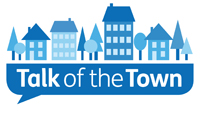What are oral language interventions?
Oral language interventions, often considered under the rather unattractive term oracy, are can be described as “what the school does to support the development of children’s capacity to use speech to express their thoughts and communicate with others, in education and in life” (Alexander, 2010: 10). Although this has clear and obvious synergy with the teaching of literacy, or English at secondary school, the impact of such interventions goes beyond this subject. The development of effective oral communication skills has a learning benefit across all subjects because talk is a feature of all lessons. Oral language interventions can, in this respect, have a meta-cognitive aspect: they seek to develop not just the ability to communicate but also to think.
Is there consensus about its impact?
The EEF toolkit rates the research in this field highly. They note that there is extensive evidence, including a range of recent randomised controlled trials and meta-analyses, pointing towards oral language interventions having a moderate impact. In their translation of effect sizes, they characterise such interventions as having a +5 months impact.
Key research in this field
Comparative research into classroom talk in the UK, USA, India, Russia and France carried out in 2000 suggested that in the UK the quality of student participation in discussion was low. The report characterised student talk as being dominated by short answers to teacher questions; a closed process (Alexander, 2000). Following this report, a group of academics at the University of Cambridge set out to develop and trial methods of improving the quality of talk in UK classrooms. Their approaches became known as ‘Dialogic Teaching’ and ‘Thinking Together’.
Aside from the work of some independent academics in the United States (the work of Lauren Resnick is of particular note), the most significant research into the effectiveness of oral language inteventions has been carried out by Cambridge academics such as Neil Mercer and Robin Alexander, the figures who developed the strategies. A relatively small number of key names therefore feature very heavily in the literature on oral language interventions.
Examples of these studies include Neil Mercer’s work showing the positive impact of oral language interventions on verbal reasoning (Mercer, 2000) and attainment in science (Mercer et al, 2004). In 2006 Mercer and Sams published research showing a significant impact (an effect size of .59) on maths attainment of oral language interventions. All of these studies were methodologically comprehensive and designed with strict controls. The studies share a common conclusion: “improving the quality of children’s use of language for reasoning together would improve their individual learning and understanding” (Mercer and Sams, 2006: 526). Furthermore, the authors make the significant claim that this research presents hard evidence of the effectiveness of group work – although the authors couch it in the most impenetrable edu-babble imaginable (“validity of a sociocultural theory of education by providing empirical support for the Vygotskian claim that language-based social interaction has a developmental influence on individual thinking”, p.526)!
A great deal of the most up-to-date and relevant research in the field of oral language interventions is a legacy of the 2008 Bercow Report into provision for children with speech, language and communication needs (SLNC). The government’s response to this report led to the formation of the Better Communication Action Plan. A key strand of this plan was a comprehensive review of the literature, identifying what research suggested about best practice in developing oral language skills (Law, Beecham and Lindsay, 2010).
Research into the impact of oral language interventions is generally divided into the examination of 3 ‘waves’. Wave 1 interventions are general, whole-class strategies for developing oral language skills. Wave 2 consists of targeted interventions, focusing on pupils with an identified oral language need. Wave 3 concerns specialist interventions, aimed at the very small minority of students with particular, often unique, oral language needs. The bulk of research focuses on Wave 2 interventions.
Where to go next?
The fact that there is already convincing research in this field has encouraged the EEF to fund a range of large-scale studies to further develop the evidence base. The particular focus of continued research is on classroom-based interventions to tackle SLCN. Key projects ongoing are:
- Talk of the Town. A 62 school effectiveness trial testing the impact of the Talk of the Town framework. This project will report in 2016.
- Language for Learning: An effectiveness trial involving 34 schools testing the impact of a specific 20-week programme, delivered by trained teaching assistants to improve the communication skills of students entering primary school with poor oral language skills. This has the potential to be a low-cost, easily replicable programme to tackle poor communication skills at the start of a child’s school career. It reports in Spring 2015.
If you teach in a school with significant numbers of children with SLCN and you are not familiar with The Communication Trust’s website, then hot-foot it there! It provides an excellent model for how teachers can use evidence to make informed choices about a range of interventions and what to look for in terms of outcomes.
References
Alexander, R., (2000), Culture and pedagogy; international comparisons in primary education, Oxford: Blackwell
Alexander, R., (2012), Improving oracy and classroom talk in English schools: achievements and challenges. Available online here.
Ainscow, M., Gallannaugh, Kerr, K., (2012), An Evaluation of The Communication Trust’s ‘Talk of the Town’ Project, 2011-12. Available online here.
Law, Beecham, Lindsay, (2012), Effectiveness, costing and cost effectiveness of interventions for children and young people with speech, language and communication needs (SLCN). Available online here.
Mercer, N. (2000) Words and Minds: how we use language to think together. London:Routledge.
Mercer, N., Dawes, L., Wegerif, R., & Sams, C. (2004) ‘Reasoning as a scientist: ways of helping children to use language to learn science’, British Educational Research Journal, 30:3, pp.367-385.
Mercer, N., Sams, C., (2006), ‘Teaching Children how to use language to solve maths problems’, Language and Education, 20:6, pp.507-528







